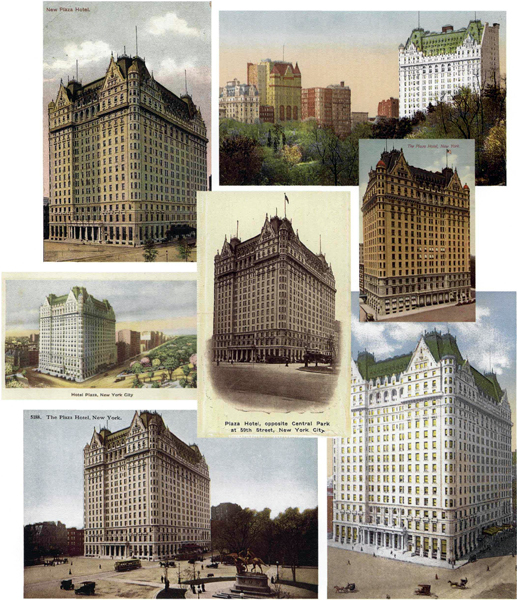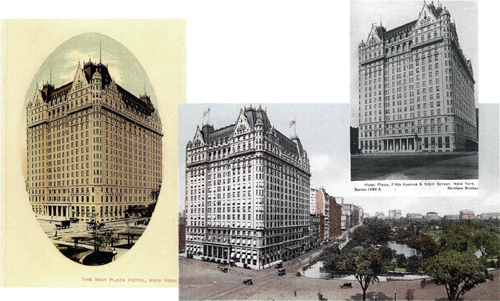

The Postcard Craze and The Plaza
Amania for collecting and sending picture postcards swept America in the first decade of the twentieth century, taking The Plaza along with it. The craze was some time in coming. The first (pictureless) government-issued postcards were introduced in 1873, followed by cards illustrated with scenes from the World’s Columbian Exposition of 1893, yet the populace took little notice. It was not until the passing of the Private Mailing Card Act of 1898—which gave private manufacturers the right to publish and sell their own cards—that the floodgates opened. Postcards took the country by storm, with the fad reaching its peak by 1908, when nearly 700 million postcards were mailed in the United States (whose population at the time was about 89 million). By far the most popular subjects were scenic views, and in New York City, The Plaza was much depicted, being a grand new source of civic pride.
Most postcards were printed in Germany, which virtually monopolized the market due to its superior printing techniques. Plates were made from black-and-white photographs that were then hand-colored by German artisans, who had never actually seen their subjects, which explains the varying hues of the hotel illustrated here. Many cards also titled the hotel the “New Plaza” to differentiate it from its predecessor.
The postcard craze abated around the time of World War I, diminished by the abrupt unavailability of German printers and also by the introduction of the folded greeting card in 1913. Many of the turn-of-the-century postcards that survive today were never sent, proof that they were just as collectible then as now.
